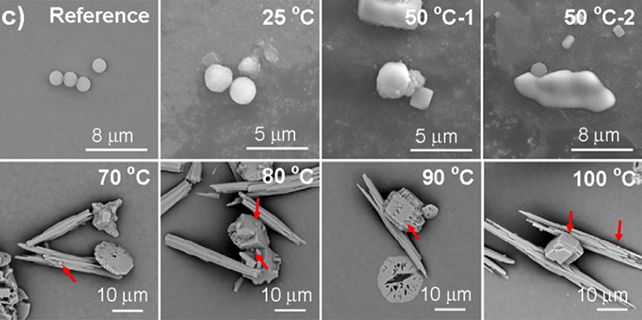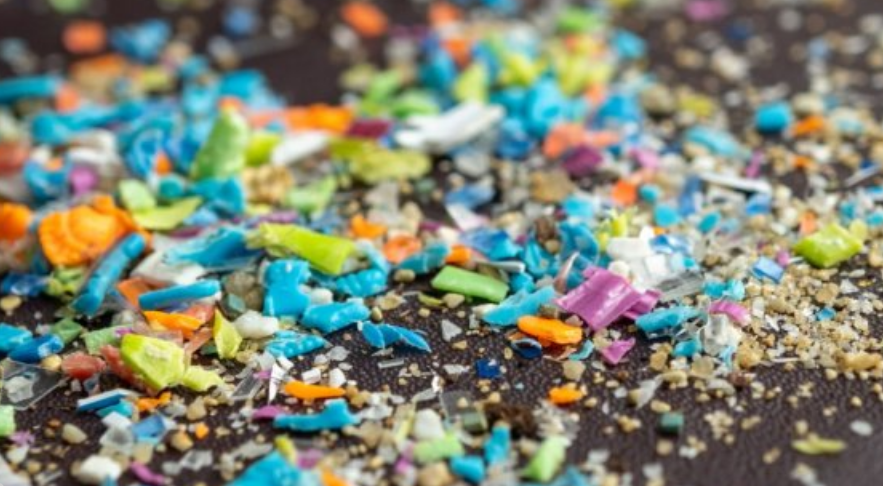As evidence emerges describing the accumulation of small plastic particles in various organs and tissues of the body, a much deeper understanding of the effects of these particles on human health is urgently needed.
The world is awash with plastic — 6 billion tons’ worth. In 2019, 353 million tons of plastic waste were produced, with a tripling of that number to more than one billion tons predicted by 2060 (ref. 1). More than 10,000 chemicals are present in plastics2, including carcinogens and endocrine disruptors. Plastics find their way into the human body in the form of tiny particles called microplastics (less than 5 mm in diameter) and nanoplastics (less than 1 μm in diameter). Microplastics and nanoplastics (MNPs) can arise from a variety of sources, including by design, as in the case of microbeads used in cosmetic and personal care products, or inadvertently, as the result of degradation of larger plastic products, such as through the laundering of synthetic clothes or abrasion of tires. MNPs are found everywhere on the planet, including the oceans, air and food supply.
MNPs enter the body mainly through ingestion or inhalation. For example, one might ingest MNPs by drinking liquid or eating food that has been stored or heated in plastic containers from which MNPs have leached, or by using toothpaste containing MNPs. One startling study found that infants may be exposed to high levels of microplastics by ingesting formula prepared in propylene feeding bottles3.
The biological effects of MNPs have been researched for decades, mainly in studies of laboratory rodents and human cells. In rodent studies, microplastics have been shown to have detrimental effects on a wide variety of organs, including the intestine, lungs and liver, as well as the reproductive and nervous systems4. More recently, MNPs have been found in a variety of tissues and organs in humans, including blood, lungs, placenta and breast milk5.
The effects of MNPs on human health are just beginning to be documented. For example, a recent report described a potential link between MNPs present in blood vessels and cardiovascular disease6. In samples of atherosclerotic plaques that had been surgically excised from the carotid arteries of 304 people, plastic was detected in plaques from approximately half of this cohort, with polyethylene in 150 of the samples and polyvinyl chloride in 31 of them. Using electron microscopy, the researchers found jagged-edged particles, identified as MNPs, in the plaques. Deposition of plastic in the plaques was strongly associated with the development of subsequent cardiovascular disease: over the course of 34 months, people with evidence of MNPs in their plaques had a 4.5-fold higher risk of a composite endpoint of nonfatal myocardial infarction, nonfatal stroke or death from any cause, relative to the risk for those without such evidence.
In another study focusing on a potential link between microplastics and inflammatory bowel disease, 15 types of microplastics were detected in human feces7. The concentration of fecal microplastics was higher in people with inflammatory bowel disease than in healthy people, and the level of fecal microplastics correlated with the severity of the disease.
Although these studies did not demonstrate a causal link between the presence of MNPs and disease, they underscore the need to accelerate research on this topic. Among the most pressing questions are the amounts of MNPs that are absorbed through ingestion, inhalation or skin exposure, the amounts of MNPs that accumulate in different tissues over the lifetime of a person, and how the different characteristics of MNPs — including their chemical composition, size and shape — affect those tissues. Mechanistic studies are also needed to probe how MNPs might lead to damage, including systemic effects mediated by the immune system or the microbiome, or direct cytotoxic effects. There is also a need for study of how exposure to MNPs and its consequent effects on health may be influenced by environmental, social and economic factors.
As the world’s burden of plastic becomes more and more untenable, international public health initiatives are aiming to manage the production, design and disposal of plastics more responsibly. In the case of microplastics, from October 2023, the European Union has restricted the intentional addition of microplastics to products and has set a target to reduce microplastics pollution by 30% by 2030. In a wider effort, the UN Environment Assembly, with the support of 175 nations, adopted a resolution on 2 March 2022 to develop a global plastics treaty8, with the intention of drafting the treaty by the end of 2024.
The health risks of exposure to microplastics are just beginning to be understood. More detailed and conclusive evidence of how MNPs accumulate in the body and have detrimental effects on human health can only spur the development and adoption of policies with the teeth necessary for reducing the global impact of plastics and improving public and planetary health.







